#Landsat8 saw fine, bright filaments on shallow, super salty #Garabogazkol yesterday.
Bands of foam perhaps? This tweeter does not know. pic.twitter.com/ugSzIS5IGB— NASA Ocean (@NASAOcean) April 5, 2017
This is the point in class where I raise my hand, jump up and down in my seat, and yell “ME! ME! I KNOW THE ANSWER!” Yes, the filaments contain foam. They also contain flotsam, jetsam, and all sorts of other floaty sea bits. But lines of buoyant sea stuff isn’t the only story. The lines have a greater tale to tell about about the water underneath them.
If you have two people run into each other, they hurt. If you have two surface currents run into each other, they dive. This is what is happening along each of these lines. Waters meet up, have no where to go, then get pushed downward. Unfortunately for the floaty bits, they are just too floaty to descend and accumulate at the surface where the water converges. Come to think of it, this process might also be forming the dust bunnies under my bed. But I digress….
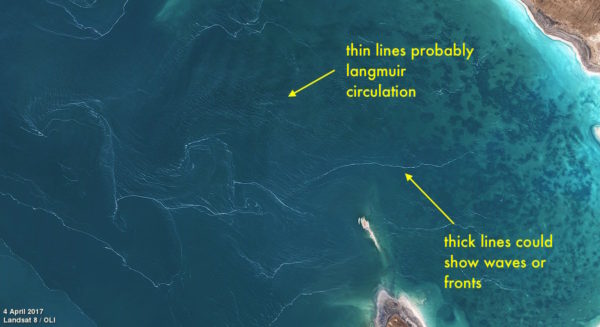
There are all sorts of dynamic ocean processes that forces water to downwell and form these foamy filaments. Traveling waves can overtake slower water and push it downward. Rotating, wind-driven Langmuir cells can push water together in long sets of lines that are parallel to the wind. Lighter water overrides denser water at fronts between different water masses forming lines at there interface. ALL OF THIS COULD BE HAPPENING IN THIS LAGOON ADJACENT TO THE CASPIAN SEA RIGHT NOW!
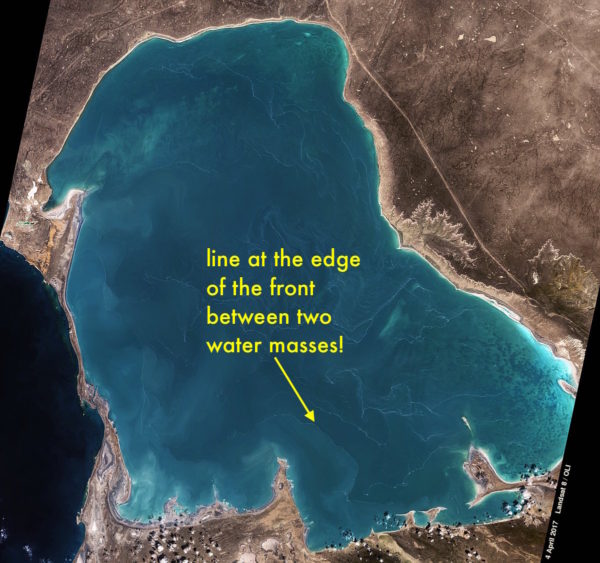
But foamy streaks aren’t just for satellite imagery. You can see them in your very own local ocean or lake! Plus you get the added bonus of seeing all the other non-foam they contain like seaweed, algae, driftwood, sea ice and all the sea life clumps of floaty stuff attract. Like a college student who has maybe had one too many, go forth and streak ocean, go forth.
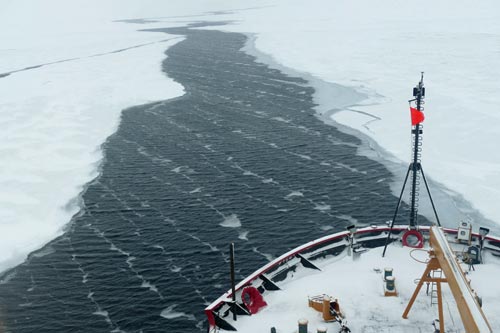
Share the post "If you love geophysical fluid dynamics, then you will love these foamy streaks in a lagoon"





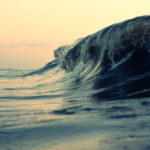
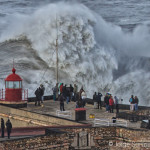
This post and the photos made me so happy! I remember trying to teach students in introductory marine biology the concept of coastal fronts. I sure wish I had had this post to reference back then! Thank you for raising your hand and telling us all the answer :-)
Ok. Ok. Please settle this dispute… internal waves vs. langmuir circulation cells. Do LCCs only form in winds >15kts or so? are they just wind rows?… the large ‘slicks’ as we call them, glassy/smooth trails of water containing amassed gelata… LCC or internal waves/tide effects?!
Langmuir cells AND tides AND waves can all cause slicks that amass anything floating. All these processes create converging surface currents which gather everything at the surface.
For langmuir circulation, this is between the cells.
http://www.cortana.com/assets/images/LangmuirCirculation.png
For tides, it’s a the tidal front. Slide 15 http://www.ecy.wa.gov/programs/eap/mar_wat/eops/EOPS_2016_12_31.pdf
For internal waves, it’s between wave crests. https://media.credoreference.com/ucpresstrs2007/fig_p639_fig002.jpg
Awesome, thanks Dr. M!